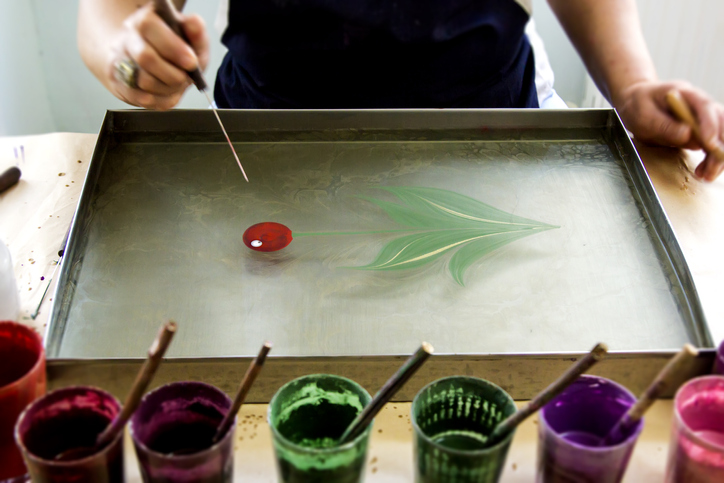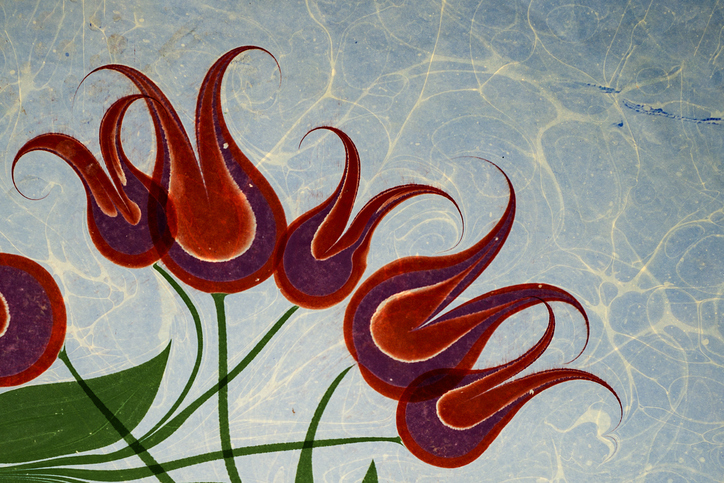
Ebru: The art brings water, the dance of colours and feelings together
Ebru is the traditional art of creating colorful patterns by sprinkling and brushing color pigments on a pan of oily water and then transforming this pattern to a special paper.
- Life
- Published Date: 03:06 | 31 August 2019
- Modified Date: 03:10 | 31 August 2019

It has been a traditional art of book enriching calligraphy and binding books for many centuries.

In the 13th century, the first forms of Ebru emerged in Central Asia and spread to Anatolia through.
During the Ottoman period, Turkish calligraphers and artists created new forms and perfected techniques.
Most popularly used colors in Ebru are light green, red and yellow.
The most frequently seen designs are flowers, foliage, ornamental and first quarter of the moon.
Ebru is traditionally transmitted from one master to his/her apprentice through informal practical training.
The apprentice usually observes and imitates the work of his/her master and assists in different stages of the application of Ebru.
The training process continues with identification and production of materials and equipment.
After the introduction stages of training, application process for the apprentice begins. Achieving basic skills of Ebru takes at least two years for the beginners.
In recent years, women and youth raised interest to Ebru with the increasing number of free courses, workshops organized by local authorities and universities.
Since this art brings water (symbolizing source of life), dance of colors (means of creating amazing world), and feelings of the artist together, each work of Ebru is unique art and cannot be reproduced twice.
The characteristics of Ebru allow the artistic flexibility in the choice of techniques through which can be expressed innermost feelings, thoughts and creativity.
The tradition brings out human potential around the tradition of craftsmanship by ornamenting sides, inner and outer covers of special books, calligraphy, glassworks, and gifts.
"Ebru: Turkish Art Of Marbling" was registered on UNESCO's Representative List of the Intangible Cultural Heritage of Humanity on behalf of Turkey in 2014.

